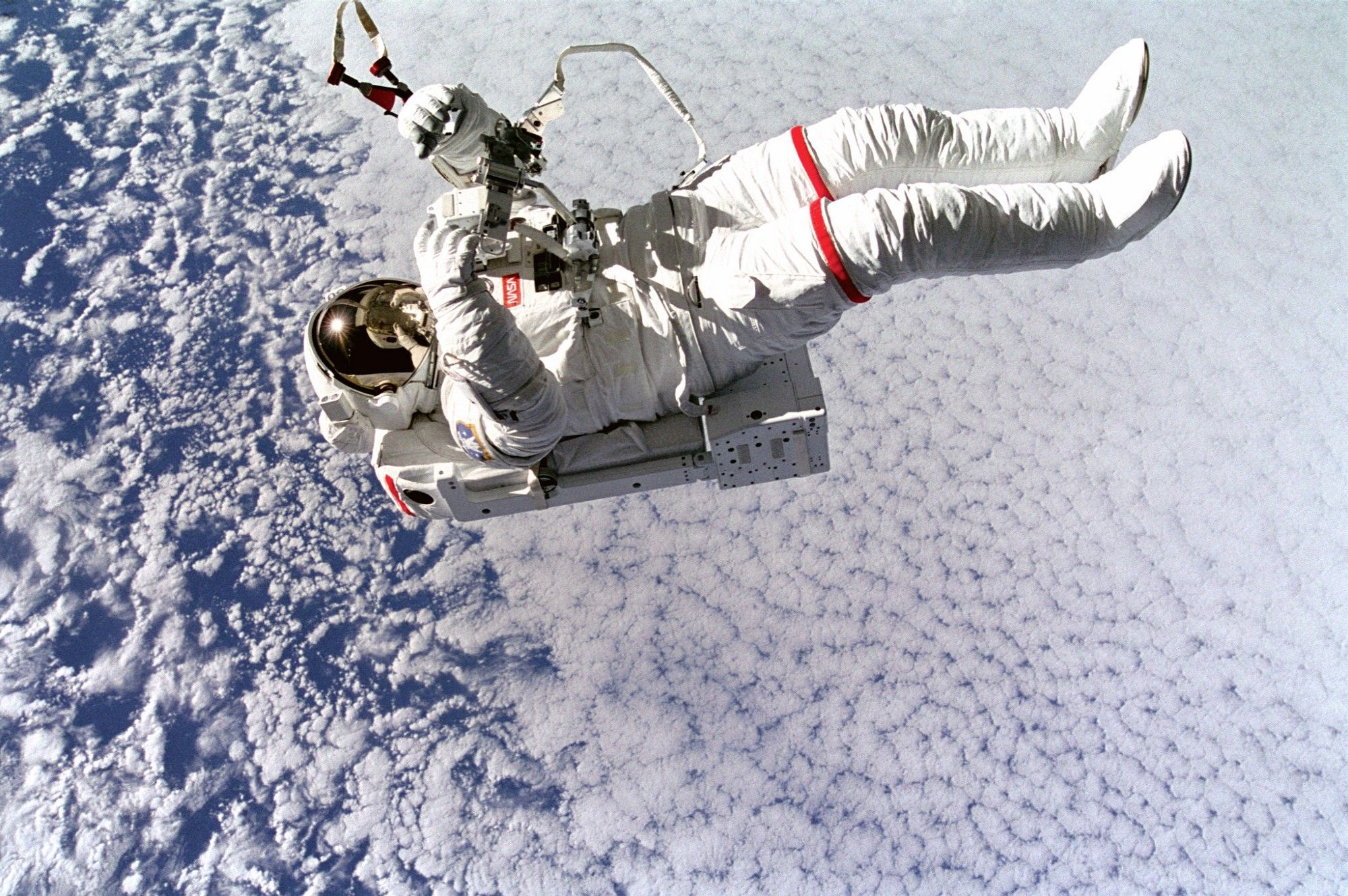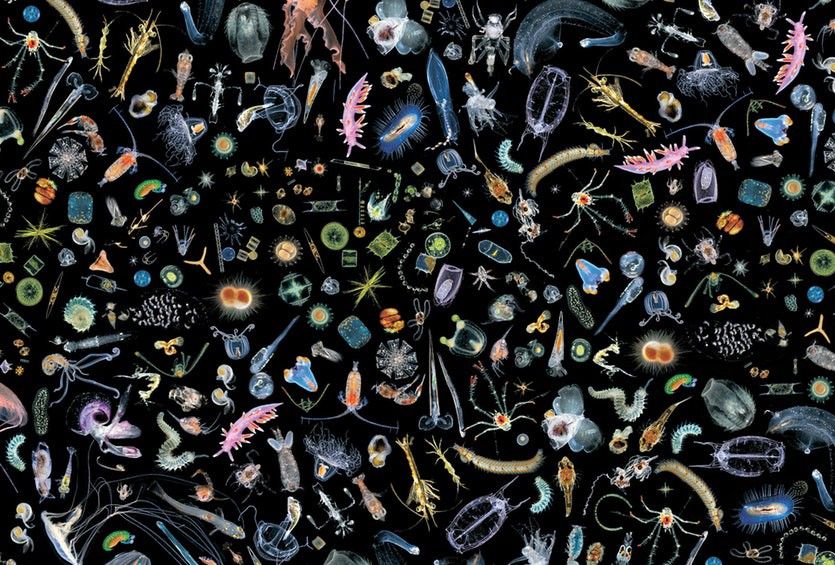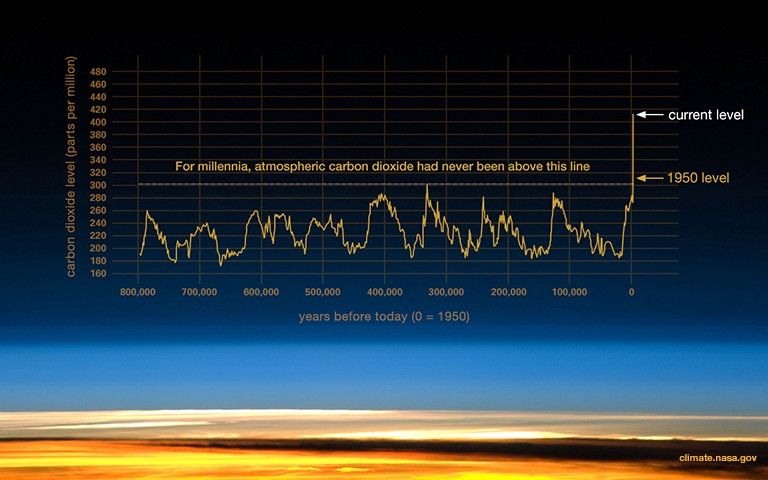How Humans Broke The Climate Computer
Microbes created the third atmosphere. Human beings are breaking it

Sometimes I’m working on my computer and my daughter will come and poke and slap at the keyboard. She’s very proud of herself and it’s obviously doing something, but she doesn’t know what, and it’s usually bad.
That’s humanity. We’re mashing on the climate computer, with no comprehension of how it works.
Ancient life had a good thing going with the climate, until humans started banging on it. After a few more failed password attempts, we’re going to lock everybody out for a thousand years.
Of Microbes
Ancient life means microbes. For about 85% of the time since the planet was formed, life was completely microbial⁴⁴. We like to think that we have great technology, but microbes have been terraforming our planet for billions of years, using ‘primitive’ mouths and butts.
They created oxygen, got buried as carbon, and made the very atmosphere we breathe. Before microbes, the atmosphere had less than 1% oxygen. Now it has 21%. This gave us life and also fire, the gas is literally flammable. If there was a Prometheus, it was a microbe. We are quite literally swimming in their beneficent farts.
Let’s look at oxygen a bit closer.

This is a graph of oxygen levels on a logarthmic scale, over all of Earth time. This doesn’t show the raw percentage of oxygen, but it does show how dramatic the changes were. The huge jump 2.4 billion years ago is the Great Oxygenation Event, or Holocaust, depending on your perspective. At that point oxygen went from a trace element to over 1%. This was enough to trigger massive changes — killing off most life and turning the Earth into a giant snowball.
At this point microbes were children and they were also idiots. Like us, they almost destroyed life on Earth. But they didn’t. They created a high-energy world rich in oxygen, and eventually rebalanced the climate so that it was once again broadly habitable for life. They have maintained that balance ever since. This is the third atmosphere, the one we currently breathe.
The first atmosphere was whatever space threw at us and the second was whatever volcanos spit up, but the third atmosphere was created by life. It was created by microbes. What we call climate isn’t some inert property of the Earth. The climate is truly alive.
In a seminal work, James Lovelock called this geochemical system Gaia. An earth-spanning lifeform of its own.
We have since defined Gaia as a complex entity involving the Earth’s biosphere, atmosphere, oceans, and soil; the totality constituting a feedback or cybernetic system which seeks an optimal physical and chemical environment for life on this planet¹⁰. (Gaia).
Gaia is a useful metaphor, but a bit too hippie for many people. You don’t have to go that far. The basic idea is that environment changes life, and life changes the environment. And this is undoubtably true.
There is an invisible network across the oceans, the air and deep in the earth that sustains the atmosphere and climate as we know it. Animal life is just the tip of that iceberg, a story aptly told by Paul Falkowski in his book Life’s Engines. I will reference that book throughout this piece, putting the page numbers as footnotes.

At any given time there are a trillion trillion (10²⁴) microbes living on Earth⁹⁴. Even your body is not really you, there are more microbes in your gut than cells in your body.
This vast network is in effect a supercomputer, terraforming the planet and making it habitable for life. Microbes have survived volcanoes, asteroids, ice ages and a 25% increase in solar energy. They will survive us as well. Microbes have been running this computer for aeons, and — a few hiccups like the Great Oxygen Holocaust aside — running it well.
And Men
Things were going great until we came along. Humans, so called intelligent life, have been a deadly combination of ignorant and supremely self-assured. We have hopped onto the climate computer and started merrily jamming on the keyboard. It has not gone well.
In one year, we can extract one million years worth of petroleum — or, to put it another way, it took one million years of photosynthesis of algae and higher plants to make the fuels we burn in a single year¹⁵⁴. (Life’s Engines)
Oil, natural gas, coal, methane. Fossil fuels. We have been digging up tonnes of buried carbon and blithely tossing it into the atmosphere for over a hundred years now. Like a child hammering on a passcode until their parent’s phone locks, we have no idea what we’re doing. And it’s not good.

Fossil fuels were buried for a reason. The burial of that carbon, over millenia, is partly what enabled oxygen levels to rise and temperatures to stabilize where they are. A big part of the climate balance involved keeping those dead bodies underground.
However, like stupid teenagers in a bad horror movie, humans have opened the crypts and let the zombies out. We are dumping millions of years worth of carbon into the atmosphere almost all at once. It is too fast for microbes to react and so fast that it is already killing many forms of life. Including us.
The result of these human-made machines has been rapid alterations in the chemistry of the planet. It will take several hundreds, if not thousands, of years for microbes to restore Earth to a new equilibrium¹⁵⁸.
In essence, this is childhood’s end. We have mashed the microbial climate computer so much that it is broken, at least for our purposes. Microbes of course could care less. They have had trillions of children, and watched trillions die in five extinctions. This is just the sixth.
The human genome sequence revealed that we have virtually no unique genes. If we are lost, the world of microbes will proceed to carry out their functions and come to new steady states¹⁷¹. (Life’s Engines)
Unless we find some new horror to unleash (like engineered microbes) it is unlikely that we’ll end life on Earth, just civilization as we know it.
But that’s small comfort to, you know, us.
We Broke It We Bought It
One thing science can teach us is humility. The Earth was not created for us. The sun doesn’t revolve around us. Even the universe may be just one of many realities. In the same way, we are not the most important and powerful lifeform on this planet.
In the course of their evolutionary history, microbes have made this planet habitable for themselves and, ultimately, us. We are only passengers on the journey¹⁷². (Life’s Engines)
Humans are children, but we seem to have taken the wheel. We are changing the climate more in a hundred years than microbes did in millions. And we have comparatively less time to react.
The first step, as when in any hole, is to stop digging. Humans have to completely stop the use of fossil fuels, which is unleashing millions of years worth of microbial wrath every year.
The next step is a little humility.
We are geological children, standing on the shoulders of microbial giants, thinking that we’ve touched the sun. We should have a little respect for the dominant lifeform on this planet, and the geochemical symphony it conducts. We should learn a little and then, maybe, use the climate computer as adults.
Further Reading
I highly recommend further reading. The roots of climate change are in the deep and incredibly fascinating history of the Earth. As a start, Paul G. Falkowski’s Life’s Engines is a very readable and mind-bending trip into how microbes made the earth habitable. He has also published a reading list on Five Books, which I’ve been going through.